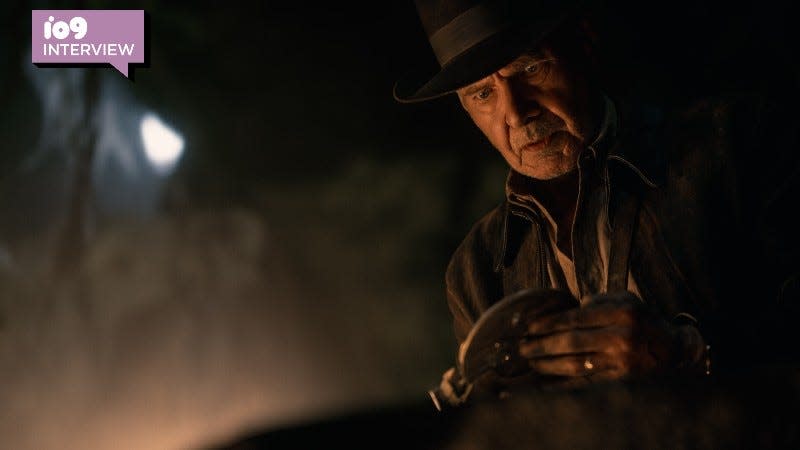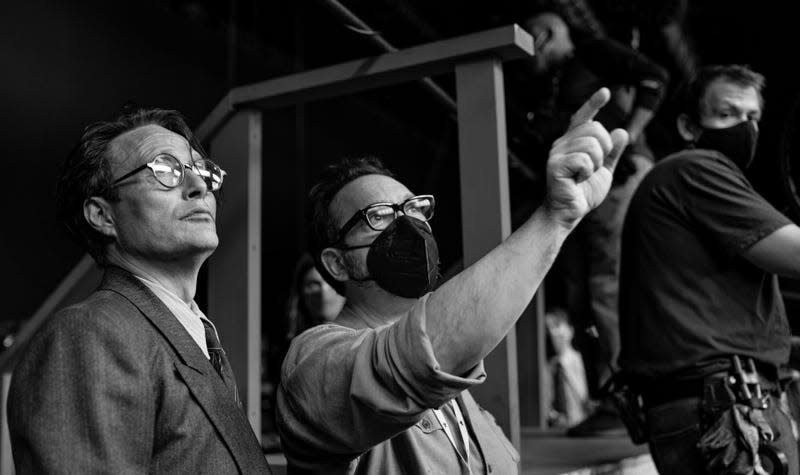How Indiana Jones and the Dial of Destiny Learned From Crystal Skull's Mistakes

- Oops!Something went wrong.Please try again later.
- Oops!Something went wrong.Please try again later.
Harrison Ford is back as Indiana Jones.
Indiana Jones is one of the most beloved franchises in the world, so anytime a new sequel comes out, expectations are enormous. Unfortunately, when expectations are that high, the result is usually disappointment, as seen with 2008's Indiana Jones and the Kingdom of the Crystal Skull. Now, with Indy’s latest adventure Indiana Jones and the Dial of Destiny coming to theaters June 30, director James Mangold looked back at the previous film to see what part four did wrong that the first three films did so right.
“There was always a kind of an innate challenge that I think we saw in Crystal Skull—which is, in the first three pictures, you have this perfect synthesis of the goals of the picture, which is as much an adventure as it is also a tribute to cinema itself, golden age cinema to be specific,” Mangold told io9 recently. “You have this kind of [Erich Wolfgang] Korngold-esque score by John Williams that’s just taking that home. The cinematography is noir-ish and extravagant. And the hero is wearing a fedora and emerging from shadows. Okay. So those three pictures work within that context. But now suddenly, as we jump forward in time, what happens?”
Read more
“The world goes through a period of modernism and suddenly Indiana Jones—that music, that look—isn’t what the world is,” the director continued. “[The world is] listening to Elvis Presley in the Crystal Skull context and in ours to the Beatles [and] the Stones. So how do you convert? And these were the questions when I came on the movie I was thinking about: ‘How do we make a movie that maintains what we love about Indy, but is aware that it may not be a perfect fit in this other time?’ And that may be some of what they struggled with in the last picture—it’s almost like someone showed up for a ‘40s picture but the movie’s in the ‘50s. There’s this kind of dissonance and what I thought is, ‘We should make that dissonance a character of the film.’”

“We should make the story about what it is to be a hero at sunset in his 70s in a world that no longer is necessarily looking toward the past, but is entirely looking toward the future,” Mangold said. “In a world in which the heroes are rock stars or astronauts, not archeologists. In a world in which the division between good and evil is not so [obvious.]”
So how did Mangold accomplish that? Well, here’s what he told us. “What I kind of envisioned when I came on was pretty simple,” he said. “Which is that we give you a full-blast Indiana Jones movie like you knew them in the first 25 minutes, right? Then, you fall off a cliff and you land in a kind of ‘70s picture with a 70-year-old Indiana Jones in modern New York City with a series of clear human struggles and problems. But then, the movie slowly climbs its way back. This 70-year-old will end up living through his own Indiana Jones adventure again, but the movie earns its way there with this character kind of coming out of a bit of a slumber.”
Will audiences like the choices Mangold made that riff on some of what Crystal Skull did wrong? We won’t have to wait long to find out. Indiana Jones and the Dial of Destiny opens next week. Watch more from Mangold in our video below.
Want more io9 news? Check out when to expect the latest Marvel, Star Wars, and Star Trek releases, what’s next for the DC Universe on film and TV, and everything you need to know about the future of Doctor Who.
More from Gizmodo
Sign up for Gizmodo's Newsletter. For the latest news, Facebook, Twitter and Instagram.

